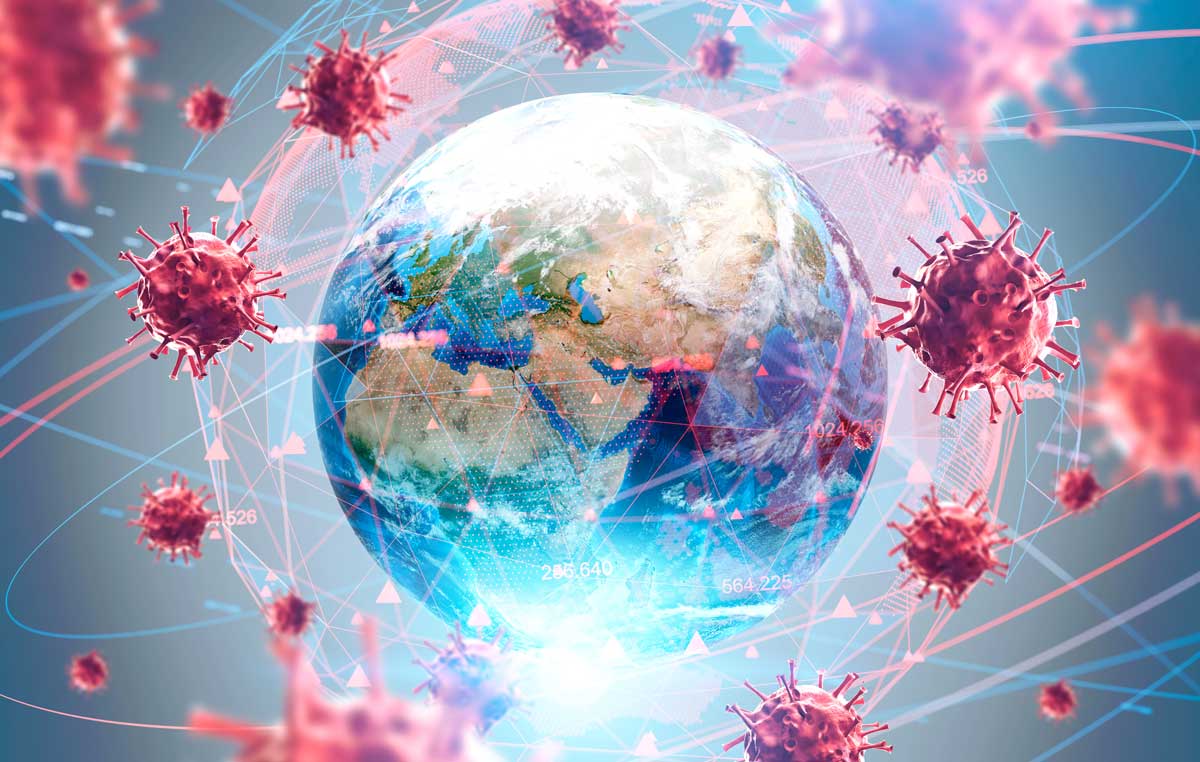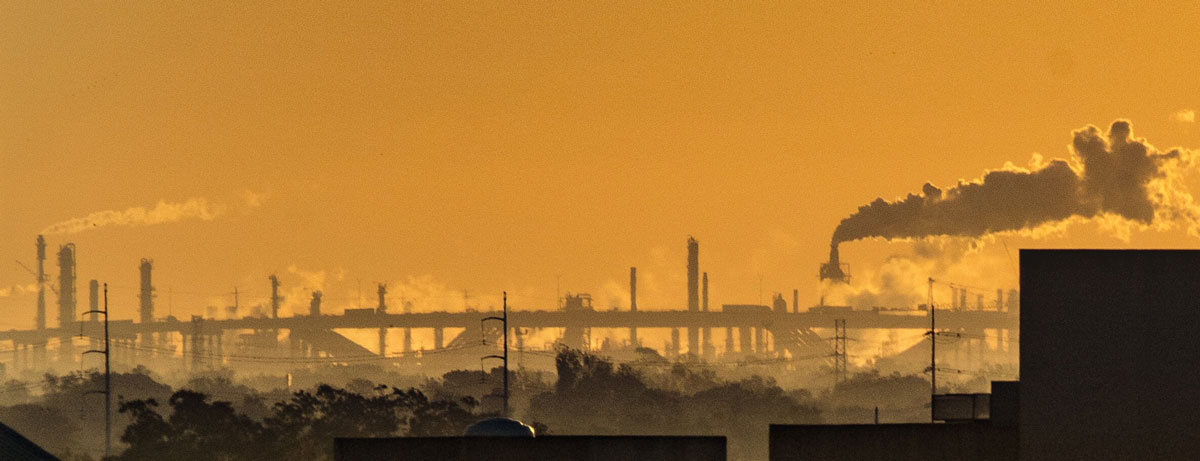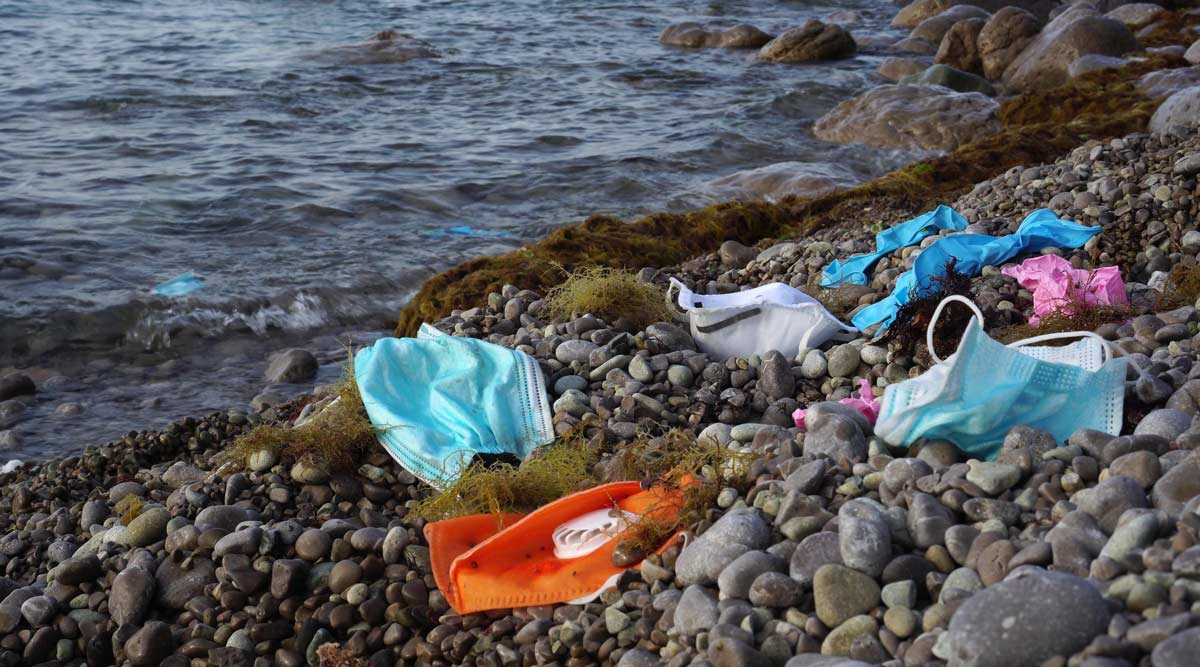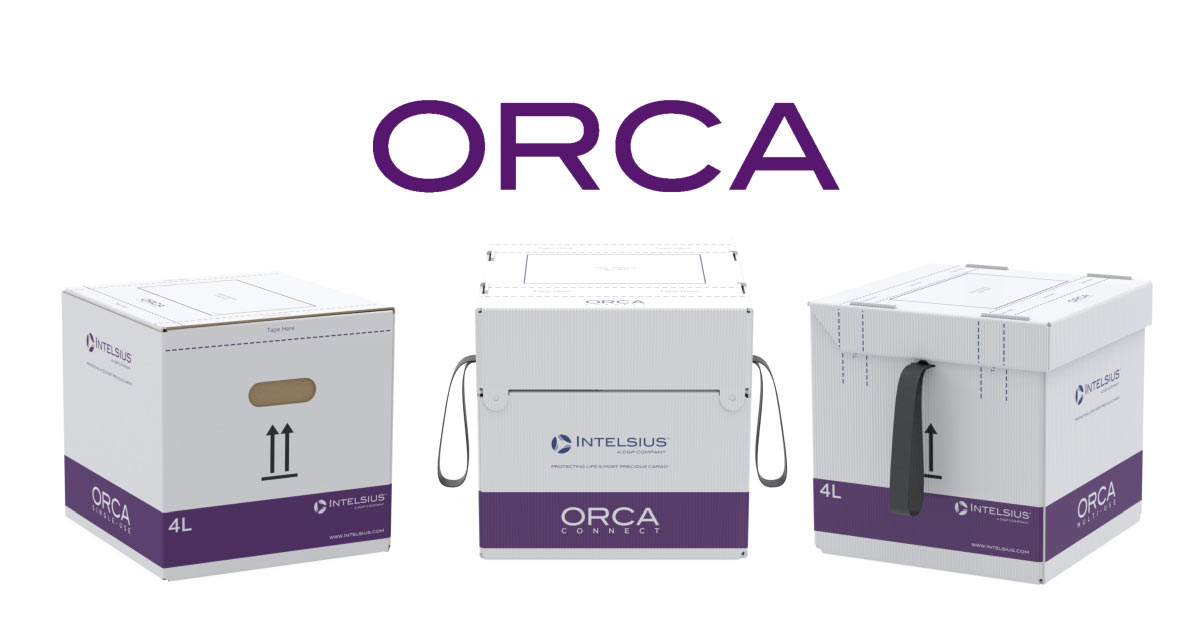The Environmental Impact of COVID-19
In our latest blog we’ll begin to explore the environmental impact of COVID-19. This will include the world’s response to the pandemic, and what it means for green energy, and socially conscious environmentalism. We’ll also look at whether the global race to emerge from national lockdowns has seen environmental deadlines and commitments missed or dismissed as not urgent. And lastly, what impact the delivery of over 7.8 billion COVID-19 vaccines will have on our environment, and whether there’s anything we in the temperature-controlled packaging, and cold chain logistics sectors can do to limit the damage.

Not quite business as usual
We can’t help but be acutely aware of the scale of this pandemic, it’s seemingly permeated every aspect of our day-to-day lives in ways we may have previously not thought possible. At Intelsius, at a product level that’s meant a steep increase in demand for COVID-19 swab sample transport solutions, and enquiries about dry ice packaging solutions for vaccine distribution. But it’s also impacted the way we think, including how we form part of the solution to overcoming the COVID-19 pandemic with our products, services and expertise.
Our recent blog posts have explored the role of dry ice in vaccine transport, and the last, crucial mile in a vaccine cold chain as we seek to support our sector with up-to-date information. Like us, you have had to flex to meet the new, pressing need of COVID-19 this year, shifting resource into product development or planning specific to the demands of this global pandemic.
To further illustrate quite how much the collective global focus – directed by governments, the media, and health organisations – has shifted firmly and indefinitely upon COVID-19, we can look to the biopharmaceutical industry for more clues.
The global response
Biopharmaceutical companies have been reluctant to share details of the financial investment they and their third-party investors have poured into COVID-19 vaccine development. But, with a reported 300+ vaccines in different stages of development, and with almost every significant biopharmaceutical firm in the world committing resource to COVID-19 vaccines or therapeutics in some form, the degree to which this novel SARS disease has caught our attention is clear to see.
A recent The Scientist article exploring how the biopharmaceutical industry managed to quickly pivot and redirect its resources explained the impact COVID-19 had on their operational priorities: ‘Many of the staff working on COVID-19 projects have been reshuffled from some of the hundreds of clinical trials that drug companies have been forced to put on hold due to the pandemic.’1
Reportedly hundreds of vaccine trials have been suspended in favour of redirecting resources to find a COVID-19 vaccine. Switzerland-based biotechnology firm, Addex Therapeutics recently announced that they were going to see a, ‘nearly complete close-down in clinical research’ after announcing that it would delay the start of a clinical trial to treat involuntary movements in people with Parkinson’s disease in order to commit vital resources to COVID-19 vaccine research and development. At Yale University, lung-cancer researcher Roy Herbst says clinical trials for cancer have been cut to ‘almost zero’ and are allowed only when a participant is deemed to have exceptional need. 2
Further weight to this global attention shift can be seen in the volume of vaccine stockpiling from governments around the world. In light of the recent successful phase 3 trials for both the Pfizer-BioNTech, and Moderna vaccines, the EU has pre-purchased a total of 360 million doses (200 million from Pfizer, and 160 million from Moderna). This adds to the EU’s wider COVID-19 vaccine portfolio including 6 yet-to-be-approved vaccines from the likes of Johnson & Johnson, CureVac, and Sonofi.3
The UK – a nation of 66 million people – has reportedly stockpiled 340 million COVID-19 vaccine doses from up to six suppliers, and with many more vaccines in phase 1, 2, and 3 trials, it’s likely these already unprecedented vaccine portfolios will grow even larger.4
In Kalamazoo, Mich., the Wall Street Journal reports that, ‘a stretch of land the size of a football field has been turned into a staging ground outfitted with 350 large freezers, ready to take delivery of millions of doses of Covid-19 vaccine before they can be shipped around the world.’5 It’s clear that when we talk about delivering these vaccines, we’re talking about unprecedented scale. Described as, ‘the biggest ever vaccination programme’ by Pfizer’s supply chain VP, they have so far spent over $2 billion on organising logistics networks and solutions for COVID-19 vaccines in order to deliver 1.2 billion doses by the end of 2021.6
IATA recently outlined the pressure air transportation of COVID-19 vaccines is about to put on its networks, with its Director General and CEO, Alexandre de Juniac stating: ‘Safely delivering COVID-19 vaccines will be the mission of the century for the global air cargo industry’. IATA later quantified the scale of this mission, saying the 7.8 billion doses required to vaccinate everybody once would require, ‘8,000 747 cargo aircraft.’7 To put that in perspective, each 747 cargo aircraft is capable of carrying 26,000 cubic feet (736 m3) of cargo. That’s about the same as five semi-trucks.
With our collective focus seemingly directed squarely at overcoming the COVID-19 pandemic, what does this unprecedented mobilisation of global logistics mean for the environment?
Back to the beginning – lockdowns, pollution, and the so-called benefits of a pandemic
In an attempt to slow the spread of the disease, a near-total global shut down went into effect in the spring of 2020. Cafes, bars, shopping centres and city streets were empty. All but a very few essential flights were grounded, and factories were forced to power down. The world, in effect, went dark. As most of us adjusted to this new normal, and came to terms with home working, one walk a day, and daily government briefings, the environmental impact of this global human sleep state was seemingly positive.
Back in March 2020, the BBC reported that compared with that time last year, levels of pollution in New York had reduced by nearly 50%, emissions had fallen by 25% in China, and satellite images were showing nitrogen oxide (NO2) emissions fading away across Europe.8 In the midst of an unprecedented global emergency, satellite before and after images of Wuhan, China, and video footage of animals braving town centres in search of food gave us all a small crumb of environmental comfort. It seemed that amongst all the bad news, our determination to fight COVID-19 had given us cause for hope over the environment.
The global shut down had given us a preview of what is possible when we take strong, collective action. In a short time, the environment was seemingly recovering; with a more concerted, long-term effort, perhaps we could begin to reverse the decades of damage and begin to restore our air quality, the cleanliness of our oceans, and think more carefully about our collective responsibility to climate change. However, positivity about COVID-19’s impact on our environment has since been dampened by a return to pre-COVID-19 pollution levels, and in some cases an increase.

As the first country to impose lockdowns when the virus hit, and one of the earliest to start reopening its factories and cities, China’s experience offers a preview of what could be in store elsewhere. The dramatic air quality improvements seen as manufacturing and transportation largely came to a halt in February and March have now vanished.9
As lockdowns eased throughout the summer, China’s industrialists looked to make up for lost time. Provincial officials desperate for the economic boost that comes with any construction are giving the go-ahead to a raft of new coal-fired power plants, says Lauri Myllyvirta, lead analyst at the Helsinki-based Centre for Research on Energy and Clean Air, which reported the pollution data from China. ‘Suddenly a lot more permits are being handed out,’ says Myllyvirta. If the world is to avoid the most catastrophic climate scenarios, China must ramp up its investment in clean energy, not coal, he says. ‘So that is very alarming.’10
With a world looking to bounce back, there’s a very real danger that a globally felt sense of making up for lost time sees record emissions being pumped into the atmosphere. A year of lockdowns could force people to take more holidays, driving further to see family and friends – avoiding public transport in favour of their car – and flying perhaps more than ever before as we gorge ourselves on our new found freedom of movement. Any early signs of environmental recovery could just as easily evaporate by the time we emerge from the COVID-19 pandemic.
The true cost of PPE
Not only are we likely to emerge from this pandemic with an increased appetite for industry and travel that could see us creating lasting damage to our environment, but we’ve also created new industries, and scaled up other relevant industries deemed vital to the fight against COVID-19 that could inadvertently damage the world around us. One such industry inadvertently having a negative impact on our environment is the one supporting the manufacture of personal protective equipment (PPE).

Between February and October 2020, the UK Government procured and distributed 3.8 billion items of PPE throughout the NHS supply chain.11 In just an 8 month period, the NHS had used over a billion more items of PPE than it had in the entire year previous. Scotland – a nation of just 5.4 million people – has procured and distributed over 600 million items of PPE between March and November of 2020.12 These figures do not include personally bought facemasks, and so approximating the global number of single-use PPE manufactured, used, and disposed of becomes a virtually impossible task.
These staggering figures wouldn’t present a clear and present danger to our environment if the items of PPE were mostly recyclable, and/or reusable, but sadly in the vast majority of cases, they’re not. In a recent BBC interview, microplastics expert Dr Christian Dunn, head of The Plastic Research Centre of Wales at Bangor University described how the environmental impact of single-use PPE containing plastic would ‘last forever’, and that the PPE being manufactured to stop the spread of COVID-19 – while vital to stop the spread and save lives – represented a ‘backward step’ on the fight against pollution.13
Has the environment been side-lined while we focus on COVID-19?
A recent United Nations impact report warned that COVID-19 is ‘threatening to reverse progress on the Global Goals and the Paris Climate Agreement.’ The report soberingly found that, ‘because of the size, scope and pace of the pandemic, there is currently a significant risk the response to the COVID-19 crisis will absorb most of the political capital and limited financial resources and divert focus away from the implementation of the Nationally Determined Contributions.’14
Analysis by The Guardian found that, ‘the prospect of a global green recovery from the coronavirus pandemic is hanging in the balance, as countries pour money into the fossil fuel economy to stave off a devastating recession.’ The report continued: ‘Promises of a low-carbon boost are failing to materialise. Only a handful of major countries are pumping rescue funds into low-carbon efforts such as renewable power, electric vehicles and energy efficiency.’15
It seems the world has had its head turned in more ways than one, with a robust response to COVID-19, coupled with a desire to accelerate economic recovery overtaking previous commitments to green energy, and the implementation of environmentally friendly solutions across multiple sectors.
Looking closely at the vaccine cold chain and how it impacts the environment
The recent success of the Pfizer-BioNTech, AstraZeneca-Oxford University, and Moderna phase 3 vaccine trials has given the world hope of a spring/summer 2021 return to relative normality. The unprecedented reaction of the biopharmaceutical industry mentioned above has yielded effective vaccines in record time, and with hundreds of vaccines still in phase 1, 2 and 3 trials, we can expect a vast portfolio of vaccine options to become available over the coming months.
As the focus gently shifts away from vaccine development, to how we get these vaccines into nations, regions and communities around the world, the question of how you transport billions of doses – many of which will require deep frozen (-20°C to -80°C) or refrigerated (2°C to 8°C) temperatures – safely and securely has become the new hot topic.
Our recent articles on the role of dry ice, and last mile vaccine delivery have explored the crucial role of temperature-controlled packaging in distributing vaccines at scale. What we’re yet to explore is potential impact of that packaging on the environment, and how existing solutions being provided by Intelsius could help limit the environmental impact of COVID-19 vaccine delivery.
Little is known about how long a vaccine can protect somebody from getting COVID-19. This is only likely to become clear over the coming months as recipients report on whether they tested positive for COVID-19 after having received a vaccine. With the prospect of not only a one-off vaccine delivery to vaccinate 7.8 billion people, but multiple deliveries over the next few years, the environmental impact of that distribution deserves the full attention of the temperature-controlled packaging industry, and its partners.
So, what is the material makeup and environmental impact of vaccine cold chain logistics? What’s required to move vaccine X from A to B? And what, if anything, can we do to limit the environmental impact of delivering vaccines to people all over the world, including hard to reach, poorly connected communities?
In order to keep the analysis of a COVID-19 vaccine cold chain solutions and their material components clear and succinct, we’ll focus on the Pfizer mRNA vaccine, which requires sub-zero freezing in order to retain its efficacy. Another reason for focusing on the Pfizer-Biotech vaccine is that with huge demand, including pre-orders in the hundreds of millions worldwide, we can expect to see the Pfizer vaccine being shipped in record numbers to every corner of the globe.
According to the Wall Street Journal, The U.S., UK, EU, and Japan have placed a combined order of 450 million doses, with the option to buy a further 600 million. Countries in South America and in the Asia-Pacific region also have placed significant orders.16 Pfizer’s own plan is to deliver 1.2 billion doses by the end of 2021, the biggest vaccination programme in its history.
But Pfizer being the significant and well-established biopharmaceutical entity they are, plans for the supporting cold chain logistics have been in place for some time, with planning beginning as early as March 2020. Pfizer’s Chief Executive has reiterated the importance of the underlying cold chain that supports its vaccine: ‘Ensuring over a billion people globally have access to our potential vaccine is as critical as developing the vaccine itself.’17
Pfizer’s vaccine will be shipped from its numerous manufacturing sites around the world, en masse and primarily to two huge staging areas in Kalamazoo, Mich. and Puurs, Belgium. This initial delivery from manufacturing site to staging site will require pallet-sized, deep frozen shippers, using predominantly air transportation, but also sea and land routes in later stages. This will take the shape of ‘dozens of cargo-jet flights, and hundreds of truck deliveries every day.’18
The carbon footprints generated from these massive land, air and sea cold chains is clear to see. For example, one of the 747 cargo aircraft reportedly in line to carry the COVID-19 vaccines between countries and continents burns 1 gallon of fuel per second.19 That means that a typical a 1 hour 30 minute flight from Belgium to London, delivering one cargo-load of vaccines will consume a staggering 5,400 gallons of fuel – fuel containing the CO2 which is contributing to global warming.
The maths behind the total distances covered and fuel burned across all forms of transportation throughout the eventual global vaccination cold chain are unlikely to ever be fully calculated. But it’s clear to see that without more environmentally friendly transport options immediately available at the scale required, the COVID-19 vaccine cold chain will leave a significantly deep carbon footprint.
In terms of packaging, Pfizer have decided to develop their own temperature-controlled, dry ice shipping solutions. The box, known as ‘cool boxes’ are 15.7in sq (39.8cm sq) and insulated by a dry-ice ‘pod’ or liner inserted around five trays of vaccine doses. Each tray, which is 9.1in sq (23.1cm sq), carries 1,000 doses. These boxes are then made up into a pallet and placed into an insulated pallet-shipper.21 At this stage, the exact material component makeup of Pfizer’s cool boxes hasn’t been published, but we know that it’s insulation will either be expanded polystyrene (EPS), or vacuum insulated panels (VIPs), and the outer box will either be cardboard or correx.
What is clear is that Pfizer, Moderna and AstraZeneca – plus all future developers of successful COVID-19 vaccines – will require a lot of temperature-controlled packaging. That means cardboard, correx, EPS, VIPs and dry ice being used at a never-before-seen scale, with inevitable implications for the natural world. With this in mind, it’s important that we and others have existing – or are striving to develop – solutions that both meet demand for COVID-19 vaccine distribution with safe and secure packaging solutions, and limit long-term damage to our environment.

Our commitment to the environment
Whether it’s committing to greener alternatives in our product designs, recycling all our waste, or partnering with institutions that actively stimulate positive environmental outcomes, we can all do more to lessen our impact in the midst of COVID-19.
At Intelsius, limiting the impact of our products on the environment forms a central part of our thinking from the very beginning of the product development cycle. While maintaining the efficacy of the biologics inside our products is, and always will be our number one focus, we will always endeavour to use environmentally friendlier material solutions if it allows us to achieve the same or better level of performance.
We also invest heavily in creating reusable solutions, cutting down waste, and saving you money without having to compromise on quality. Our ORCA range of multi-use, temperature-controlled packaging solutions present a long-term investment that saves you time, money and allows you to continuously ship vaccines and biologics throughout the cold chain without adding to your carbon footprint.
The ORCA range – available as single-use, multi-use, and with built in connectivity for effective tracking and tracing of your cargo – achieves a minimum of 96 hours protection using superior vacuum insulated panels (VIPs), and either dry ice for cargo requiring sub-zero temperatures, or advance phase change materials (PCMs) for cargo requiring refrigeration. The range covers payload volumes between 4.5L and 50L, making it perfect for last mile vaccine delivery.
For full details on the ORCA range of products either visit our website for more information or contact a member of our Customer Service team.

Beyond providing intelligently designed solutions that protect your vaccines anywhere in the cold chain, we offer a fulfilment service that minimises your stock holding requirements and can pre-condition your ORCA solution to your specific needs, as and when you need it. This rental service – along with offering multi-use systems forms a core part of our commitment to developing temperature-controlled packaging solutions that provide superior protection, while limiting your carbon footprint.
For full details on ORCA Fulfilment, visit our website for more information, or contact a member of our Customer Service team.
Another core element of our commitment to the lessening our impact on the environment is by partnering with organisations that actively and positively impact the environment around us. At Intelsius, we’re proud to partner with the charity, ORCA. With their unique take on marine conservation, ORCA is a charity that’s entirely dedicated to studying and protecting whales, dolphins and porpoises in the UK and European waters. Intelsius supports ORCA as regularly as it can with fundraising and events.

ORCA Director, Sally Hamilton outlined the importance of the partnership their charity has with Intelsius: ‘Now more than ever it is vital for us to be doing everything that we can to protect the marine environment, and keeping whales and dolphins safe doesn’t just protect these iconic animals, but it is also a key part of maintaining a healthy ocean. Intelsius have shown their commitment to marine conservation by working with ORCA and without their support our efforts to protect the marine environment would be that much harder. We’re proud to call them our partners and our friends, and we are excited to work with them in 2021 and beyond to make sure future generations can marvel at the whales and dolphins on our doorstep.’
As well as partnering with ORCA, we’re also incredibly proud to work together with the charity, One Tree Planted. One Tree Planted is a 501(c)(3) non-profit organisation. As an environmental charity, they’re on a mission to make it simple for anyone to help the environment by planting trees! For every ORCA Fulfilment rental we sell, we plant a tree through the charity One Tree Planted, supporting the goal to plant more trees and protect our environment.
To read more about our partnerships with ORCA and One Tree Planted, visit our website.
Conclusions
The reaction of the biopharmaceutical industry has seen effective vaccines developed in record time, and its ability to pivot and redirect its collective focus has been rightly hailed as an incredible victory for the sector. Likewise, the collective global response to help limit the spread – including the increased production of PPE and hand sanitizer – is testament to the flexibility and industry of those sectors.
However, with the true impact of COVID-19 on the environment not likely to become fully clear for some time, what is clear is that our actions and choices right now can limit any long-term damage brought about by this pandemic. Whether it’s ensuring governments stick to agreed timetables for environmental change, looking more carefully at the material makeup of our PPE, or – more specific to our sector – thinking carefully about our COVID-19 cold chain, and the solutions we chose to invest in, we all have a responsibility to protect our environment.
For any questions relating to the material makeup of our products, and how we can help you limit your cold chain carbon footprint, please contact your local branch for more information.
External references
1 – The Scientist (2020) – How the Pharma Industry Pulled Off the Pivot to COVID-19
2 – Nature (2020) – Coronavirus shuts down trials of drugs for multiple other diseases
3 – BBC (2020) – Coronavirus: EU buys 300m doses of BioNTech-Pfizer vaccine
4 – BBC (2020) – Coronavirus vaccine: UK signs deals for 90 million virus vaccine doses
5 – Wall Street Journal (2020) – Pfizer Sets Up Its ‘Biggest Ever’ Vaccination Distribution Campaign
6 – Wall Street Journal (2020) – Pfizer Sets Up Its ‘Biggest Ever’ Vaccination Distribution Campaign
7 – IATA (2020) – The Time to Prepare for COVID-19 Vaccine Transport is Now
8 – BBC (2020) – Will Covid-19 have a lasting impact on the environment?
9 – National Geographic (2020) – Why COVID-19 will end up harming the environment
10 – National Geographic (2020) – Why COVID-19 will end up harming the environment
11 – UK Government (2020) – Experimental statistics – personal protective equipment distributed for use by health and social care services in England: 28 September to 4 October 2020
12 – Scotland Government (2020) – Coronavirus (COVID-19): PPE distribution statistics
13 – BBC (2020) – Covid-19: Single-use plastic impact ‘will last forever’
14 – United Nations (2020) – COVID-19 Impact Brief
15 – The Guardian (2020) – Revealed: Covid recovery plans threaten global climate hopes
16 – Wall Street Journal (2020) – Pfizer Sets Up Its ‘Biggest Ever’ Vaccination Distribution Campaign
17 – Wall Street Journal (2020) – Pfizer Sets Up Its ‘Biggest Ever’ Vaccination Distribution Campaign
18 – Wall Street Journal (2020) – Pfizer Sets Up Its ‘Biggest Ever’ Vaccination Distribution Campaign
19 – Flight Deck Friend (2020) – HOW MUCH FUEL DOES A JUMBO JET (BOEING 747-400) BURN?
20 – The Brussels Times (2020) – Coronavirus vaccines will be delivered from 700 freezers in Antwerp province
21 – TI Insight (2020) – Pfizer’s new vaccine underlines the importance of packaging